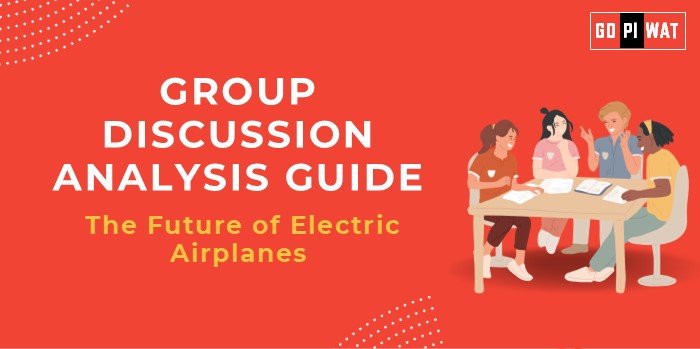📋 Group Discussion (GD) Analysis Guide: The Future of Electric Airplanes
🌐 Introduction to Electric Airplanes
Opening Context: The aviation industry significantly contributes to global carbon emissions, accounting for approximately 2.5% of total CO₂ emissions. As the world pivots towards sustainability, electric airplanes are emerging as a potential solution to reduce aviation’s carbon footprint.
Topic Background: Electric aviation has gained traction due to advancements in battery technology and the growing emphasis on green transportation. Efforts by companies like Boeing, Airbus, and startups such as Eviation highlight its potential, though significant technical and economic hurdles remain.
📊 Quick Facts and Key Statistics
- Global Aviation Emissions: 900 million metric tons of CO₂ annually, driving the push for electric alternatives.
- Battery Capacity Challenge: Current batteries store 50 times less energy than jet fuel per kilogram, limiting range.
- Prominent Players: Eviation’s Alice prototype completed a 15-minute test flight in 2022.
- Market Projection: Electric aircraft market is expected to reach $29 billion by 2035 (Allied Market Research, 2023).
- Policy Boost: Over 70 countries committed to net-zero aviation emissions by 2050.
👥 Stakeholders and Their Roles
- Government Bodies: Set regulations and provide subsidies for R&D.
- Aerospace Companies: Develop prototypes and refine battery technology.
- Environmental Organizations: Advocate for reduced aviation emissions.
- Passengers: Demand greener options, influencing market trends.
- Academia & Research Institutions: Innovate new battery and propulsion systems.
🏆 Achievements and Challenges
- Achievements:
- Successful short-range electric flight tests, e.g., Eviation Alice and Pipistrel Velis Electro.
- International commitments to sustainable aviation via ICAO resolutions.
- Norway’s goal for 100% electric domestic flights by 2040.
- Challenges:
- Range Limitations: Feasible only for short-haul flights (under 500 km).
- Battery Weight and Efficiency: Limited energy density hampers long-haul viability.
- Infrastructure Gaps: Airports need significant upgrades for charging facilities.
- Economic Feasibility: High R&D and production costs.
- Global Comparisons: Norway excels with electrification of regional air routes, while the U.S. faces airline industry resistance.
📄 Structured Arguments for Discussion
- Supporting Stance: Electric airplanes can transform regional aviation and drastically reduce emissions for short-haul flights.
- Opposing Stance: Battery technology is not yet advanced enough to replace conventional jet engines for medium- or long-haul flights.
- Balanced Perspective: While electric airplanes promise sustainability, achieving cost-efficiency and technological breakthroughs are prerequisites.
💬 Effective Discussion Approaches
- Opening Approaches:
- “Aviation’s contribution to emissions makes electric planes a critical innovation.”
- “Eviation Alice’s flight in 2022 marks a pivotal moment for green aviation.”
- Counter-Argument Handling:
- Acknowledge: “Batteries lack jet fuel’s energy density.”
- Rebut: “Investments in solid-state batteries could close this gap.”
📈 Strategic Analysis of Strengths and Weaknesses
- Strengths: Environmental benefits, alignment with global policies, innovation potential.
- Weaknesses: Limited range, high costs.
- Opportunities: Growing demand for sustainable travel, technological advancements.
- Threats: Industry resistance, slow policy adaptation.
🎓 Connecting with B-School Applications
- Real-World Applications: Sustainable operations, innovation in battery tech, green strategy in aviation.
- Sample Interview Questions:
- “How can electric aviation reshape the travel industry?”
- “Discuss the economic challenges of adopting electric airplanes.”
- Insights for B-School Students:
- Sustainability-focused innovation offers lucrative entrepreneurial opportunities.
- Learnings from electric airplanes can apply to other green transport modes.


